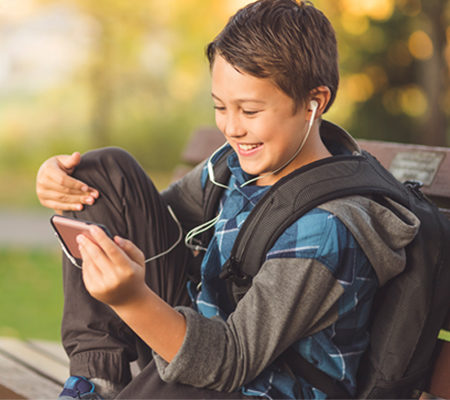When is the right age to let your child stay home alone? Can you let them ride bike to a friend’s house? When do you establish a curfew and what time should your children come home?

When is the right time to let your child have more independence? The answer is up to you and your family.
As a parent, you are asking and answering these questions for your family as your child grows. Unfortunately, there is no right or wrong answers because every family is different. More importantly, every child is different.
“No two kids are the same,” said Kelsie-Marie Offenwanger, Child & Adolescent psychologist at Marshfield Clinic Health System. “It’s important that kids feel confident before being on their own, which means having some serious conversations about ‘stranger danger,’ safety and boundaries.”
Open communication
When you communicate with your child on expectations, he or she will have a better understanding of their responsibilities and limitations when parents are not around. Whether home alone, at a friend’s house, the pool or the movies, having conversations about safety, rules and behaviors can provide comfort for you and your children.
Offenwanger recommends practical and useful guidance for kids, instead of instilling fear in them. Answer questions for your child, such as:
- How should they act or behave when you are away?
- Where can they go on their own?
- Do they have time restrictions or limits?
- What should they do and where should they go if they feel uncomfortable or in danger?
- Where do you keep the first aid kit?
- What numbers should be called in an emergency?
- What is our address or phone number in case of emergency?
“We recommend parents have an active role in empowering their kids by acting out situations through role play interventions,” Offenwanger said. “This way the child has some experience in avoiding or removing themselves from a situation if needed.”
Additionally, open communication includes asking your child about the activity they plan to do on their own: What will they be doing? Who are they going to be with? How can you contact them? From there, establish consequences upfront if rules are broken.
“Kids should know what to do if they are running late,” Offenwanger added. “And, what are the consequences if they don’t get home by a certain time? I think rather than setting a strict curfew, it’s about working with your child for each situation.”
American Academy of Pediatrics recommends children 12-13 years old should be home by 7-8 p.m. on school nights, and children 14-16 years old should be home by 8-9 p.m. on a school night. Depending on your location, municipalities also may have restrictions on times school-aged children can be outdoors.
Additionally, there are apps available, such as Find My Friends, that could allow parents to keep track of their child when adults are not physically with their kids.
Set boundaries and structure
Many factors come into play when you are setting boundaries for your child. As Offenwanger said, every child is different – cognitive ability, maturity and developmental level. Because parents know their child best, you can develop a structure for you and your family.
Beyond foundational safety tips like don’t text and drive, wear reflective clothing when jogging or biking at night, or pay attention to your surroundings, you may develop specific rules for your family.
Create a set of house rules or a checklist when it comes to solo activities. This structure establishes a routine for the household, and can be fluid as your child grows up.
“Kids are going to remember if parents reinforce positive behaviors,” Offenwanger said. “You are teaching them responsibility and how to care for themselves.”
Trust your child
Offenwanger advises to start the process by trusting your child. Once the rules and consequences are established, you can allow your child to work through situations and trust that they are going to follow through.
“It can be tough to find a balance between giving teens freedom and keeping them safe,” she said. “If a child has given us no reason to worry, we definitely want to start out slowly by trusting them. Privileges should then be earned following their responsible behavior.”
By allowing your child to be on their own with boundaries, you are teaching them skills they can use for rest of their life.
“There’s no hard and fast rule about it,” Offenwanger said. “Each parent is going to know their kids the best. Do what is best for your family to keep your children safe.”
For questions about your kids, talk to a Marshfield Children’s provider.
Schedule appointment Message your provider
Related Shine365 articles
Fun family activities with fitness and exercise in mind
Chicken pizza recipe: Cooking together as a family
Tips for a safe, healthy family vacation

